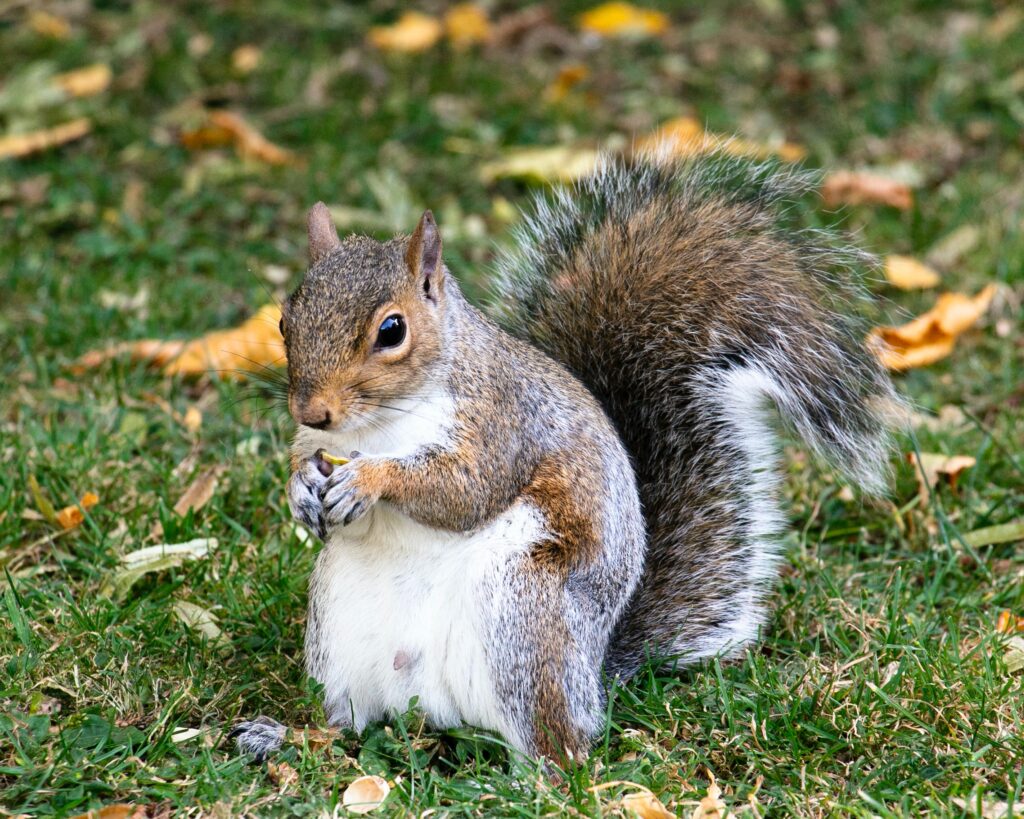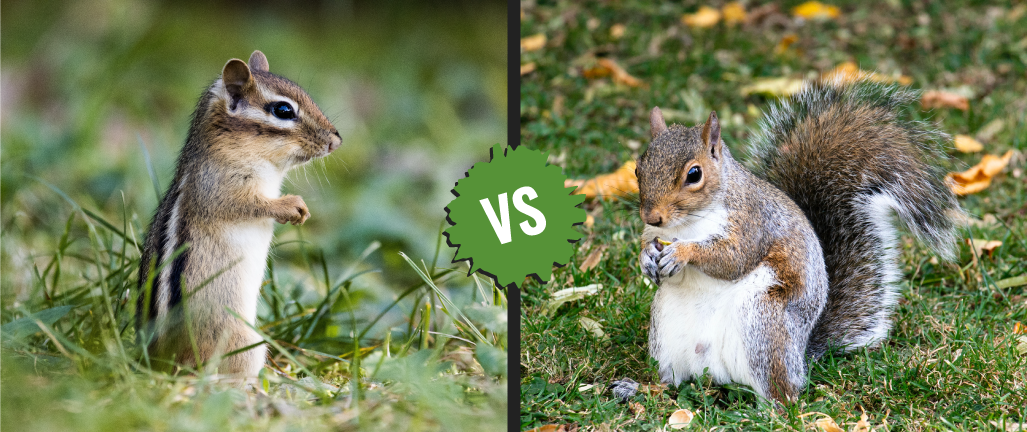Prepare for an exhilarating clash between two charismatic creatures of the wild: chipmunks and squirrels. In this ultimate showdown, we’ll explore their fascinating differences, remarkable adaptations, and entertaining antics as they navigate the branches and compete for resources.
So, buckle up and join us on this thrilling journey into the world of chipmunks versus squirrels.
History of the Chipmunk
Introduction
Chipmunks are small, lively rodents that belong to the family Sciuridae, which also includes squirrels. These adorable creatures have captured the hearts of many nature enthusiasts with their charming appearance and entertaining antics.
Origins and Evolution
Chipmunks have a long history dating back millions of years. They are native to North America, where they have thrived for centuries. Fossil records indicate that chipmunks have been present on the continent since the Miocene epoch, which began around 23 million years ago.
Over time, chipmunks have evolved and diversified into various species, each adapted to different environments and habitats.
History of the Squirrel
Introduction
Squirrels, like chipmunks, are members of the Sciuridae family. These agile and bushy-tailed creatures are renowned for their acrobatic skills and incredible adaptability.
Ancient Origins
Squirrels have a rich evolutionary history that can be traced back to the Eocene epoch, approximately 56 to 33.9 million years ago. Fossil evidence suggests that the earliest squirrels inhabited the ancient forests of Europe and North America.
Over time, they spread to different continents, diversifying into numerous species as they adapted to diverse habitats.
Types of Chipmunk Species

Chipmunks encompass several species, each with its unique characteristics and distribution. Let’s explore some of the most common chipmunk species found in various parts of the world.
Eastern Chipmunk (Tamias striatus)
The Eastern Chipmunk is a prevalent species found in the eastern regions of North America. It is known for its reddish-brown fur, distinctive black and white stripes on its face, and a bushy tail.
These chipmunks are skilled burrowers and are often seen scurrying around forests and suburban areas, collecting food and storing it in their underground dens.
Least Chipmunk (Tamias minimus)
The Least Chipmunk is a smaller species found in the western parts of North America. It has a more muted coloration with grayish-brown fur and light-colored stripes on its face.
These chipmunks are highly adaptable and can be found in a variety of habitats, including grasslands, shrublands, and mountainous regions.
Types of Squirrel Species

Squirrels are a diverse group, comprising numerous species that inhabit various parts of the world. Let’s explore some of the most common squirrel species and their unique characteristics.
Gray Squirrel (Sciurus carolinensis)
The Gray Squirrel is a well-known species native to North America. It is recognized for its predominantly gray fur, although variations exist with reddish or black coats in some populations.
Gray squirrels are highly adaptable and can be found in a wide range of habitats, including forests, urban parks, and residential areas.
Red Squirrel (Sciurus vulgaris)
The Red Squirrel is a charming species found in parts of Europe, Asia, and North America. It is distinguished by its reddish-brown fur, tufted ears, and bushy tail.
Red squirrels prefer coniferous forests and are skilled climbers, often seen leaping between tree branches in search of food.
Key Differences Between Chipmunk and Squirrel
Size
Chipmunks are generally smaller than squirrels, with most chipmunk species measuring between 5 to 6 inches in length, excluding their tails. In contrast, squirrels vary in size, with some species reaching lengths of up to 18 inches, including their tails.
Appearance
Chipmunks and squirrels have distinct physical features. Chipmunks have noticeable stripes on their faces and bodies, while squirrels typically lack these markings.
Additionally, chipmunks often have bushier tails in proportion to their body size, whereas squirrel tails are generally longer and fluffier.
Habitat
Chipmunks tend to prefer forested areas with ample ground cover, such as fallen logs and dense undergrowth. They are skilled burrowers and create intricate tunnel systems within the soil.
Squirrels, on the other hand, exhibit greater adaptability and can inhabit various environments, including forests, woodlands, parks, and even urban areas.
Diet
Chipmunks have an omnivorous diet that includes nuts, seeds, berries, insects, and even small vertebrates. Squirrels primarily feed on plant materials such as nuts, acorns, fruits, and tree bark.
However, some squirrel species, like the flying squirrel, may incorporate insects and small animals into their diet.
Lifespan
The lifespan of chipmunks and squirrels varies among species. Chipmunks generally live up to 2 to 3 years in the wild, although some may reach 5 to 6 years with favorable conditions. Squirrels, depending on the species, can live anywhere from 5 to 20 years in the wild.
Hibernation
Chipmunks are known for their hibernation habits. They retreat to their burrows during the winter months, entering a state of torpor to conserve energy. Squirrels, while they may become less active during winter, do not undergo true hibernation.
They remain active and rely on their cache of food to sustain them through the colder seasons.
Distribution
Chipmunks are primarily found in North America, although some species extend their range into parts of Asia. Squirrels, in contrast, have a more extensive distribution, with various species inhabiting regions of North America, Europe, Asia, and Africa.
| Characteristic | Chipmunk | Squirrel |
|---|---|---|
| Size | Smaller | Varies |
| Appearance | Stripes on face | Few or no stripes |
| Habitat | Forested areas | Diverse habitats |
| Diet | Omnivorous | Primarily plants |
| Lifespan | 2-6 years | 5-20 years |
| Hibernation | Yes | No |
| Distribution | Primarily America | Global |
Final Thoughts
Even though chipmunks and squirrels both belong to the Sciuridae family, they exhibit distinct characteristics and behaviors that set them apart. Chipmunks, with their striped appearance and burrowing habits, thrive in specific ecosystems, while squirrels, known for their adaptability and acrobatics, have conquered diverse habitats around the world.
Understanding the differences between chipmunks and squirrels allows us to appreciate their unique traits and the important roles they play in our natural environments.
FAQs
Chipmunks are indeed a type of squirrel. They belong to the family Sciuridae, which includes various species of squirrels. However, chipmunks have distinct characteristics that set them apart from other squirrel species, such as their smaller size, stripes along their body, and burrowing behavior.
Yes, there are differences between chipmunks and ground squirrels. While both belong to the squirrel family, chipmunks are smaller in size and have prominent stripes on their body. Ground squirrels, on the other hand, are larger and lack the distinct striping pattern. Additionally, chipmunks are known for their burrowing behavior, while ground squirrels often create complex underground burrow systems.
In terms of destructiveness, chipmunks and squirrels can both cause damage, but their impact may vary depending on the context. Chipmunks are known to dig burrows, which can sometimes cause issues in gardens or lawns. Squirrels, on the other hand, are known to chew on wires or enter attics. However, the level of destructiveness can vary based on the specific circumstances and the behavior of individual animals.
Squirrels and chipmunks can coexist in the same habitats and are generally tolerant of one another. They may occasionally compete for food resources, such as nuts or seeds, but they can often peacefully share the environment. While they may not actively socialize, it is common to see squirrels and chipmunks inhabiting the same areas without significant conflicts.

